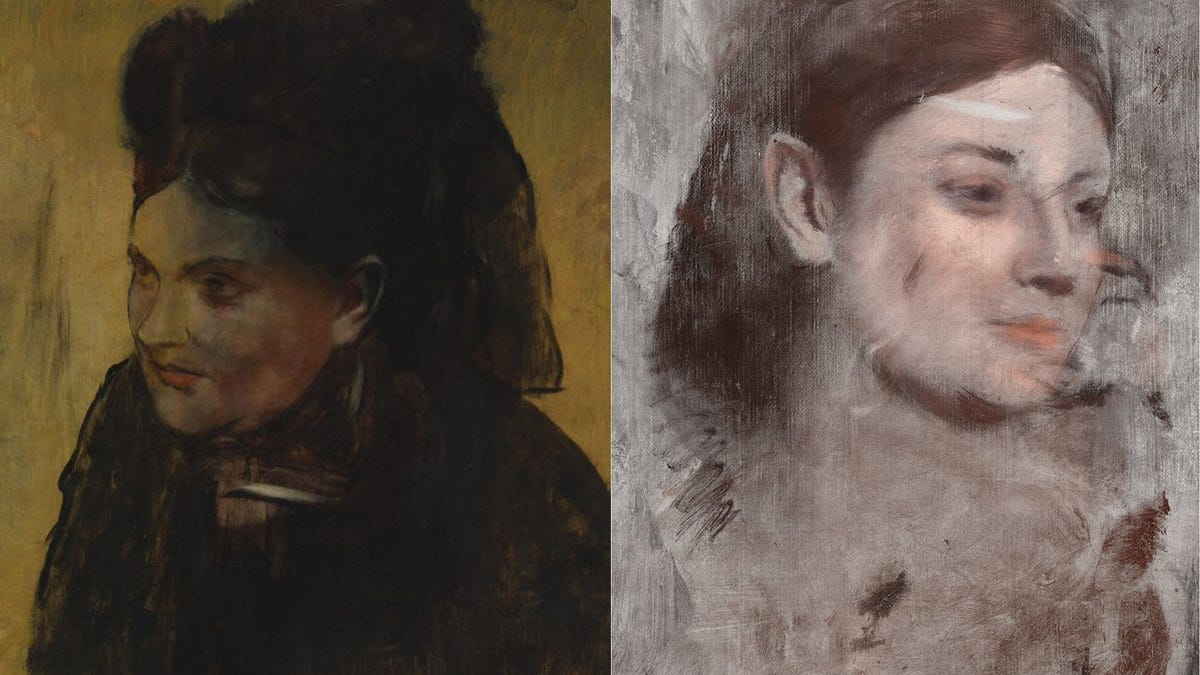Particle accelerator reveals hidden Degas painting
A hidden work painted by Degas has been revealed in full colour thanks to X-ray imaging and synchrotron technology.
It's long been suspected that "Portrait of a Woman," painted in oils between 1876 and 1880 by Edgar Degas, was painted over another painting. Now, researchers from the Australian Synchrotron have confirmed it -- and revealed the hidden painting in full colour.
Reusing canvases wasn't an uncommon practice for artists low on funds and reluctant to waste resources (and it still isn't), but it's only been in recent years that we've been able to see the artworks painted over. This is because technology has advanced to the point where X-raying an invaluable artwork isn't going to damage it.
Artists whose work has been confirmed to conceal earlier work include Pablo Picasso, Jean-Honoré Fragonard, Vincent van Gogh -- but the X-ray could only reveal the hidden works in black and white.
Degas' hidden painting was confirmed using more conventional X-rays, then taken to the Australian Synchrotron, a type of particle accelerator, to reveal the colours of the painting. They used a technique called X-ray fluorescence elemental mapping, which uses X-rays to determine the different metals in the layers of paint.
This allowed the researchers to determine the colours of the paint based on their chemical makeup. The process took just 33 hours. If the team had attempted this scan 10 years ago, it would have taken 18 months.
"We reconstructed the colours by examining the metals," Daryl Howard of the Australian Synchrotron, who led the research, told the Sydney Morning Herald. "In some cases it's simple: cobalt means blue, mercury means vermillion. However with iron it could be many colours, so a certain amount of guesswork comes in. However, we can tell from looking at surrounding colours what is most likely."
The painting underneath was revealed to be a portrait of a different woman -- possibly Emma Dobigny, a model who was a particular favourite of Degas, and who appears in several portraits by him. The similarities between these portraits and the hidden portrait led to the identification of the latter as Dobigny.
You can read the team's full paper in the Nature's Scientific Reports. The National Gallery of Victoria in Melbourne, Australia is also currently showing an exhibition of Degas' works, concluding on September 18.


